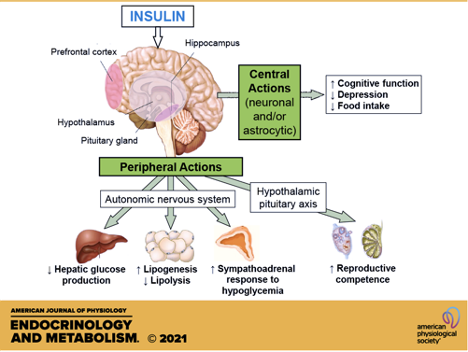Role of Amygdala and Hypothalamus
Role of Amygdala, Hypothalamus in Brain Functions:
The role and function of Amygdala
The amygdala is a small, almond-shaped structure in the brain that is involved in processing emotions, such as fear, anxiety, and aggression. It is also involved in learning and memory, particularly those related to emotional experiences.
The amygdala is part of the limbic system, a group of brain structures that are involved in emotions, motivation, and memory. The amygdala receives sensory information from the thalamus and other parts of the brain, and it uses this information to identify and respond to threats.
The amygdala is also involved in learning and memory, particularly those related to emotional experiences. When we experience a fearful or aversive event, the amygdala stores a memory of that event. This memory can then be recalled later, which can help us to avoid similar situations in the future.
The amygdala is a complex structure, and its role in emotions and learning is still being studied. However, it is clear that the amygdala plays an important role in our emotional lives.
Here are some of the main functions of the amygdala:
• Processing emotions: The amygdala is involved in the processing of emotions, such as fear, anxiety, and aggression. It does this by receiving sensory information from the thalamus and other parts of the brain, and then using this information to identify and respond to threats.
• Learning and memory: The amygdala is also involved in learning and memory, particularly those related to emotional experiences. When we experience a fearful or aversive event, the amygdala stores a memory of that event. This memory can then be recalled later, which can help us to avoid similar situations in the future.
• Motivation: The amygdala is also involved in motivation, such as the motivation to avoid danger or to seek rewards. When we perceive a threat, the amygdala can activate the fight-or-flight response, which prepares us to either fight or flee from the threat.
• Social behavior: The amygdala is also involved in social behavior, such as recognizing emotions in others and responding to social cues. For example, the amygdala is involved in recognizing facial expressions of fear and anger.
Damage to the amygdala can lead to a variety of problems, including:
• Anxiety disorders: People with damage to the amygdala may be more likely to experience anxiety disorders, such as phobias and post-traumatic stress disorder.
• Learning and memory problems: People with damage to the amygdala may have difficulty learning and remembering emotional experiences.
• Social problems: People with damage to the amygdala may have difficulty recognizing emotions in others and responding to social cues.
Overall, the amygdala is a complex structure that plays an important role in our emotional lives. It is involved in processing emotions, learning and memory, motivation, and social behavior. Damage to the amygdala can lead to a variety of problems, including anxiety disorders, learning and memory problems, and social problems.
Hypothalamus:
The hypothalamus is the part of the brain that triggers the instruction to the pancreas to produce insulin. The hypothalamus is a small region at the base of the brain that is responsible for a variety of functions, including regulating appetite, body temperature, and blood sugar levels.
When blood sugar levels rise, the hypothalamus sends signals to the pancreas to release insulin.
Insulin is a hormone that helps the body's cells use glucose for energy. By increasing insulin production, the hypothalamus helps to lower blood sugar levels and maintain them within a healthy range.
In addition to the hypothalamus, other parts of the brain, such as the hippocampus and amygdala, also play a role in regulating insulin production. However, the hypothalamus is considered to be the main controller of insulin release
The hypothalamus is located in the center of the brain, just above the pituitary gland. It is made up of a number of different nuclei, each of which is responsible for a different function.
The nuclei that are involved in regulating insulin production include:
• The arcuate nucleus: This nucleus is responsible for detecting changes in blood sugar levels and sending signals to the pancreas to release insulin.
• The ventromedial nucleus: This nucleus is responsible for regulating appetite and energy balance.
• The paraventricular nucleus: This nucleus is responsible for producing hormones that control the release of insulin from the pancreas.
The hypothalamus works together with the pancreas to maintain blood sugar levels within a healthy range. When blood sugar levels rise, the hypothalamus sends signals to the pancreas to release insulin. Insulin then helps the body's cells use glucose for energy, which lowers blood sugar levels.
If the hypothalamus is not functioning properly, it can lead to problems with insulin production and blood sugar regulation. This can lead to conditions such as diabetes and hypoglycemia.
Below is a picture of the Hypothalamus and its role in insulin production:

How Stress , Fear, Anxiety can affect critical hormone production:
Studies have shown that the amygdala can influence insulin production by affecting the release of hormones that control appetite and energy metabolism. For example, when the amygdala is activated, it can release hormones that increase appetite and lead to weight gain.
It can also release hormones that decrease insulin production, which can lead to high blood sugar levels.
In addition, the amygdala can also influence insulin production by affecting the activity of the hypothalamus. The hypothalamus is the part of the brain that controls the release of hormones, including insulin. When the amygdala is activated, it can send signals to the hypothalamus that can either increase or decrease insulin production.
Overall, the amygdala plays a complex role in regulating insulin production. While it does not directly produce insulin, it can influence insulin production by affecting the release of hormones that control appetite and energy metabolism, as well as by affecting the activity of the hypothalamus.
Here are some studies that support the role of the amygdala in insulin production:
• A study published in the journal "Nature Medicine" in 2009 found that mice with damaged amygdalas had higher blood sugar levels than control mice.
• A study published in the journal "Diabetes" in 2011 found that people with obesity had increased activity in the amygdala compared to people with a healthy weight.
• A study published in the journal "Psychoneuroendocrinology" in 2013 found that stress can activate the amygdala and lead to decreased insulin production.
These studies suggest that the amygdala plays a role in regulating insulin production and that it may be involved in the development of insulin resistance and type 2 diabetes.




